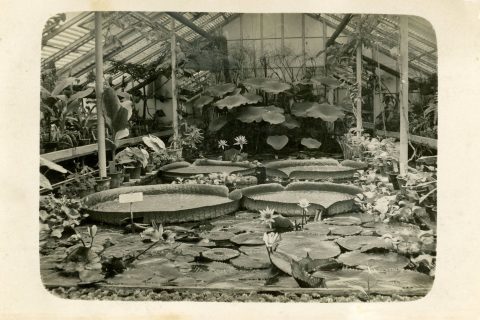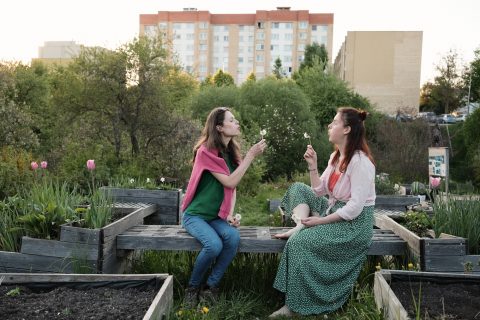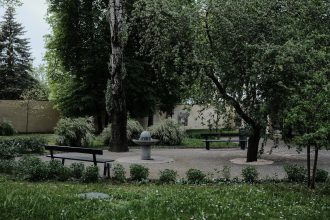“Maybe the gardens won,” guide Jonas Oškinis said, smiling sadly while leading me and only one other tour participant through the busy Zanavykiai market. Yes, two of us wanted to visit the poet and bard Edmundas Janušaitis, although, a bit later we were joined by a third participant.
May 13, the day after which the Museum Night followed, was finally warm, and it’s certainly possible that many of the city’s citizens spent time in the places Matas Šiupšinskas describes in one of the articles of this issue. Jonas and his colleagues did not even think of giving in to this and spontaneously organised the first Non-museum day – an alternative to the boring waiting for Museum Night. Non-museum day is for the time when the museums are closed, and there is a chance to visit equally interesting places that are not carrying the weight of various plaques, projects, and reports.
The wicket gate squeaks when pushed but we really are in the right place. It is really Edmundas’ garden, which was elected the No.1 event of 2022 by Owl Coffee – the creative Žaliakalnis residents’ initiative. A poet and poets – I find both forms. Perhaps this means that the garden is open, if not physically, then in terms of ideas. There is also Menų kampas (Arts’ Corner), which you can find on Facebook. It is a place where even the felled trees – as paradoxical as that sounds – are alive forever. I left the place after a couple of hours feeling a bit dizzy, and it was before Edmundas finally picked up his guitar.
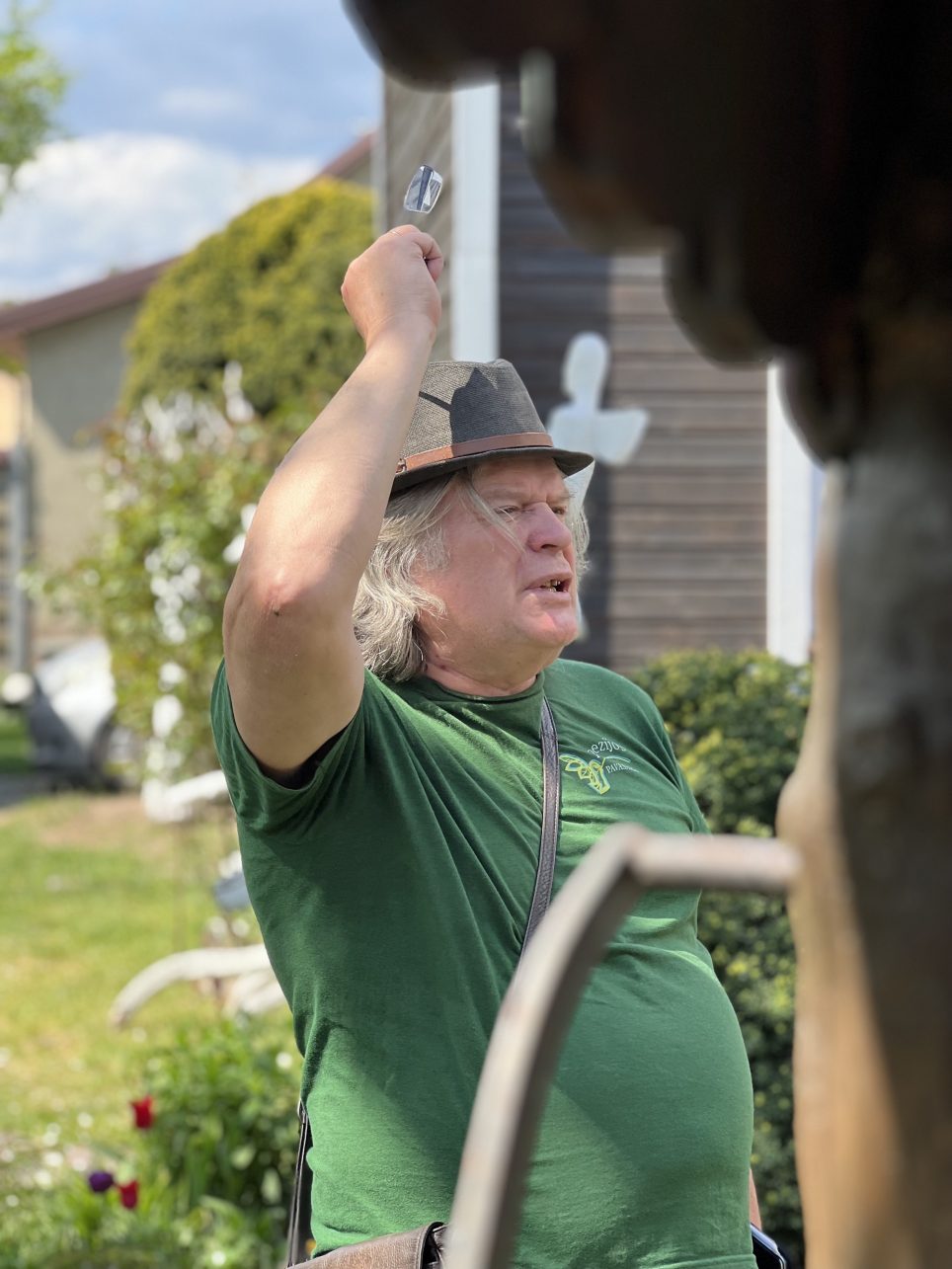
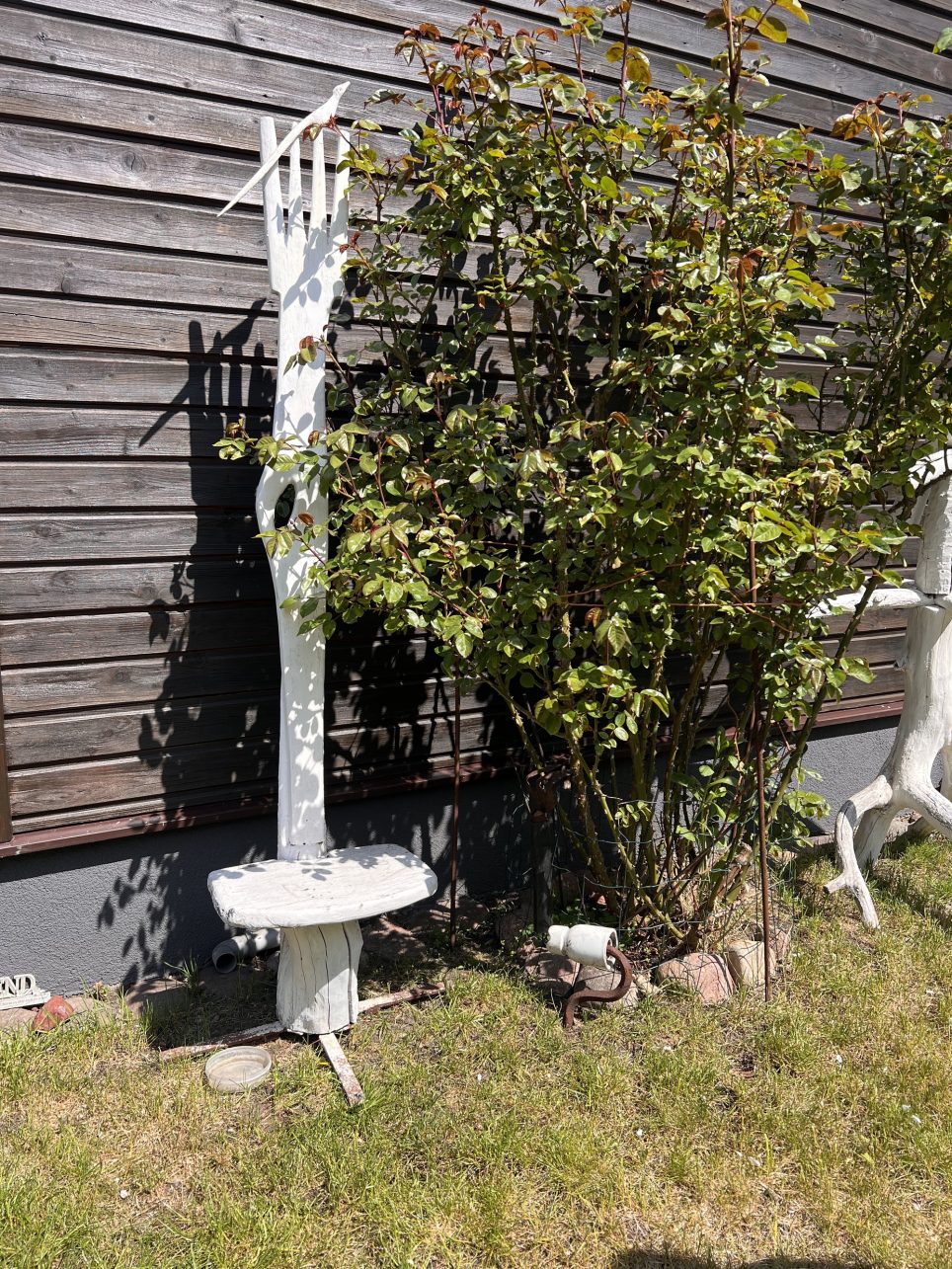
Edmundas has been living at the corner of Kapsų and Šakių streets for over 60 years. He is well established there, but Menų kampas is his latest story. The host greets us with a monologue, “You came to the poet’s garden. It’s called that because I’m a poet, a member of the Lithuanian Writers’ Union for 30 years. When we started to create this whole thing, sculptor Sigitas Straigis said, “You are a poet, so let’s call it a Poet’s Garden.” We destroyed the garden! A Gravenstein variety grew here – an apple tree that bears large, juicy apples. My father had planted a yew under it. The trees did not get along. Two branches of the apple tree withered and had to be cut off. Sigitas says, “You are lazy, all poets are lazy, they just want to write.” He gave me those branches, I carved them, and Sigitas added some birds. He said that they were like poets, we will place them there and it will look pretty.”
When asked if he had somewhat neglected the garden left to him by his parents along with the whole house, Edmundas replies that he simply decided to reorganize it (there are several versions of the plot, the second one will be discussed later in the article). “I work according to the signs. I don’t know if it was something I dreamt or what but one day I decided to start working on it.” At that moment, Gintautas Velykis, a neighbor from Žemaičių Street steps into through the gate. He was the one who filmed the birth of the poets’ garden; everything is recorded. Gintautas is also the author of Edmunda’s book covers. Now there are more of us looking at the throne, the back of which is pointing at the sky with its wooden teeth. “You see when a person sits on the throne, they’re screwed.” We are also introduced to the three or four pairs of thrushes. Birdhouses that are hung on the house accommodate tits and sparrows because the nesting-boxes are too small for starlings.
“Everything you see here is about finding a new purpose for a tree. Some are turned upside down, and others are repurposed in a different way. Sigitas carves the birds, I paint them every year, and I keep resurrecting them. It just so happened that we started this action on May 14, 2018, during Kalantinės. Since I was also related to those events, we placed Romukas Kalanta on the branches of the apple tree. He is the one with a crown. Above – needlessly forgotten Vytautas Kaladė. And here is Rimantas Baužys known only by a few people. He wrote the Manifesto of the Free Youth of Lithuania, which was read on May 18, 1972. I called all this the Field of Sacrifice. Romas’s sacrifice coincided with the apple tree’s sacrifice, which started all of this.
Next is the Tract of Faith and the Tree of Fulfillment; in the middle you will find the life teachers, regulators, critics… It’s difficult to break through their sharp beaks, Edmundas winks and introduces us to the angel of Žaliakalnis.
“There was a legendary beer bar over there called Vyrų alus (Men’s beer). During one busy drinking time, a man came wearing only his underpants. He said, “Men, please, don’t be angry, I am coming right after a football match.” And we tell him, “What match are you talking about, your wife kicked you out of the house.” I felt so bad for him, so I brought him to my garden, gave him something to feel better, and told him that he looked like an angel kicked out of the house. I described him: an angel of Žaliakalnis lives on my garage Roof. He eats apples and sometimes has a drink or two. I told Sigitas that we should immortalize this person. He carved him out of a cherry branch without underwear, with long arms, so he could hug everyone, and small wings so that he would never be able to fly out of the yard.”
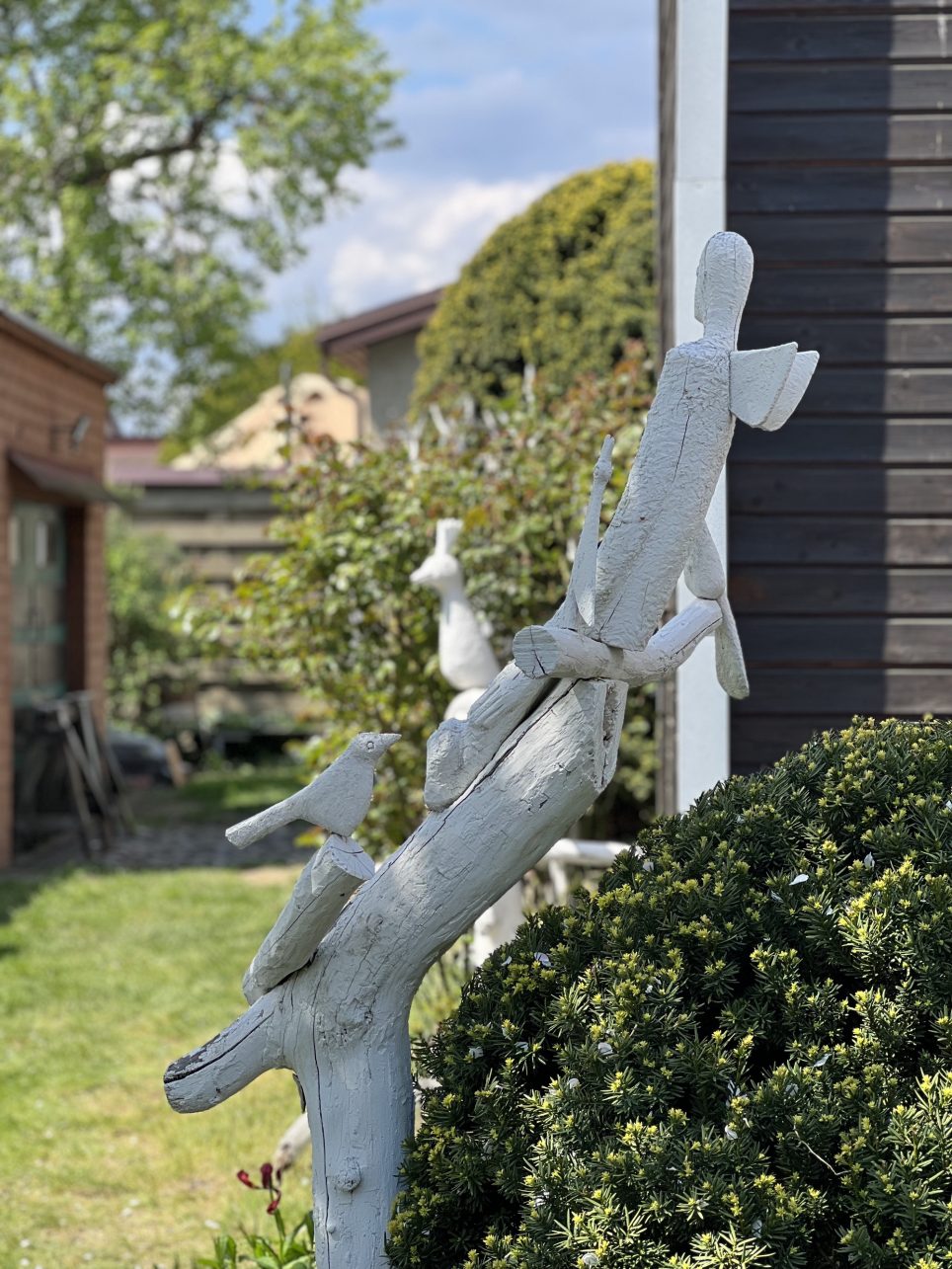
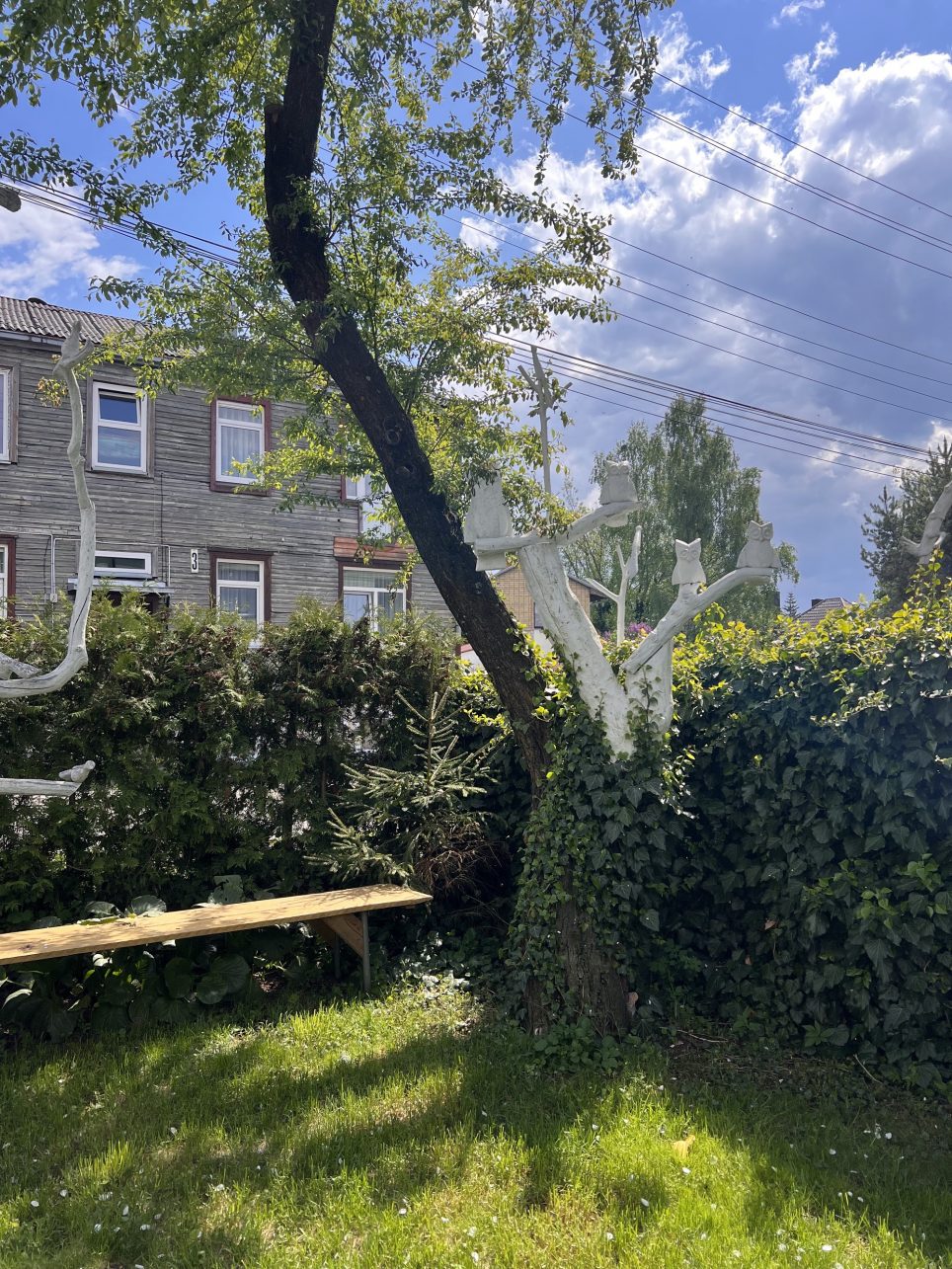
Deeper in the corner there is an Owl den dedicated to music. The big owl is Anna Maria. Now, look for a song by the Polish band Czerwone Gitary which Edmundas used to play with his friends. So that Anna Maria wouldn’t be sad, Sigitas made some friends for her: Mick Jagger, Yoko Ono, and Linda McCartney. When the host was presenting the women, which, as he noted were blamed for breaking up the Beatles, the sculptor mentioned above joined us. He also lives nearby on Kalniečių Street. When asked why he did not install such an artistic sculpture garden on his property, the creator of abstract art laughs that he simply does not have the space for it, “There’s not a single centimeter of empty space left. If I did not have the materials, I would not make anything. But I pull something out of that pile and make something…”
Sigitas presents his version of the prehistory of the Garden of Poets. When the elder Janušaitis was taking care of the corner of Kapsų and Šakių streets, the garden contained pears, apples, and plums. It was not a garden but a real jungle! “Edmundas started to tear everything up, chop it up and I thought, damn it, it’s a pity! Something needs to be done for it to remain. We did not bring anything, everything grew. There, the little birds come from the neighbor’s linden tree that was cut down.” Edmundas adds that a crow had its nest on that linden and when the tree fell, it turned out that the bird was extraordinary. She even received an electrician’s nickname because she had made her nest out of wires.
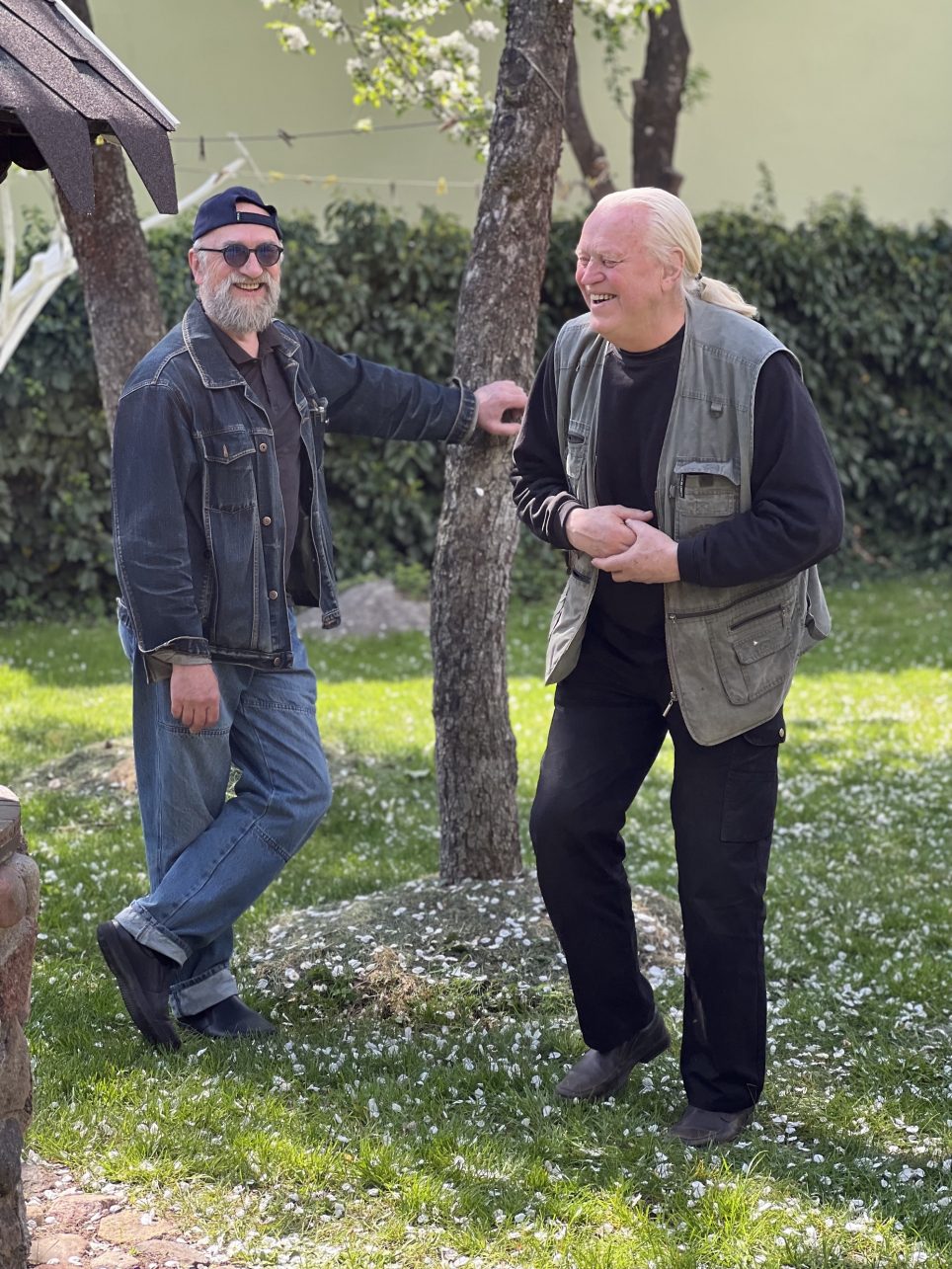
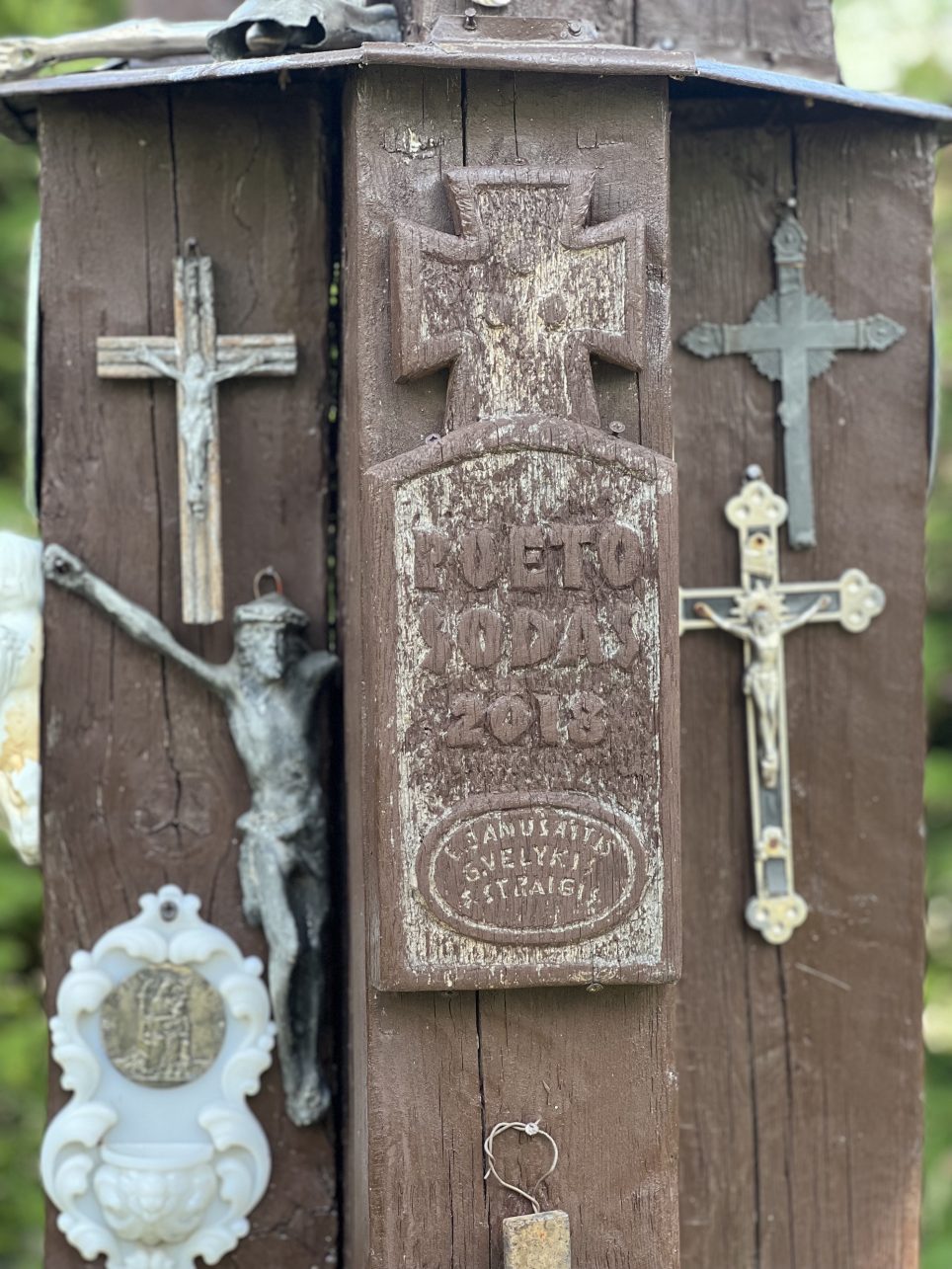
It is possible that you have already heard about this garden, but you didn’t know what was hiding behind the fence, from which a post studded with signs pointing to various places that are not only important to Edmundas but also to many artistic residents of Žaliakalnis. These are Italjanka, Prisikėlimas, Brazilka, and Parnasas, the latter being the Kaunas Artists’ House. The vision of the post might have been dreamt up by the owner of the garden, but it was made by Sigitas with the neighbors’ help. They surrounded the sign with votives, thus providing the commemorated places and their residents with sacredness. It is an excellent moment to mention the fourth musketeer, who did not visit the garden on May 13 but was remembered often that day. This is the painter Vilius Ksaveras Slavinskas, who celebrated his 80th birthday this year and received the title of a Scottish lord on this occasion.
As the conversation started to die down and we were about to go inside, where we found a beautiful story of the previous owners of the house, Edmundas’ relatives who worked at the post office, and the signing of the autographs took place while Kenny G’s album was playing in the background, my eye caught the wooden benches lined up against the fence. “Do you also hold open events, not only for friends and neighbors?”
“Not yet, but I really want to. I am from Suvalkija, so I calculate everything, and I am afraid. My wife says they will trample everything. But I want something poetic, maybe some readings. Someone could play the guitar. We need to assemble a team, a club so that at least 15 people come together rather fast.” He points his hand to the garage roof, on which Gintautas Velykis and Alis Balbierius played during Menu kampas.
I also want to mention the authentic paving stones that were left after the repair of Kapsai and the surrounding streets and then ended up in the yard of the author of Žaliakalnio brukas. The writer had to run around with a wheelbarrow. “They would have been taken away with all the rubbish.” Edmundas is a natural when it comes to museology. In addition to numerous diplomas, awards, and other acknowledgments, his house is also full of paintings, old photographs, drawings, publications, and a collection of old clocks. He acquires one at a time when he publishes a new book. The latest one, a novel of insights Su manimi ir be manęs, was published this year. When the conversation turns to prose, we hear the voice of Sigitas, who had comfortably sunk into a sofa, “Edmundas starts sentences well, but in the end, it all turns into poetry anyway.”
Listen to the thrushes. Maybe you will hear them chirping Edmundas’ invitation, a sign that the gate on Kapsų Street is open?

